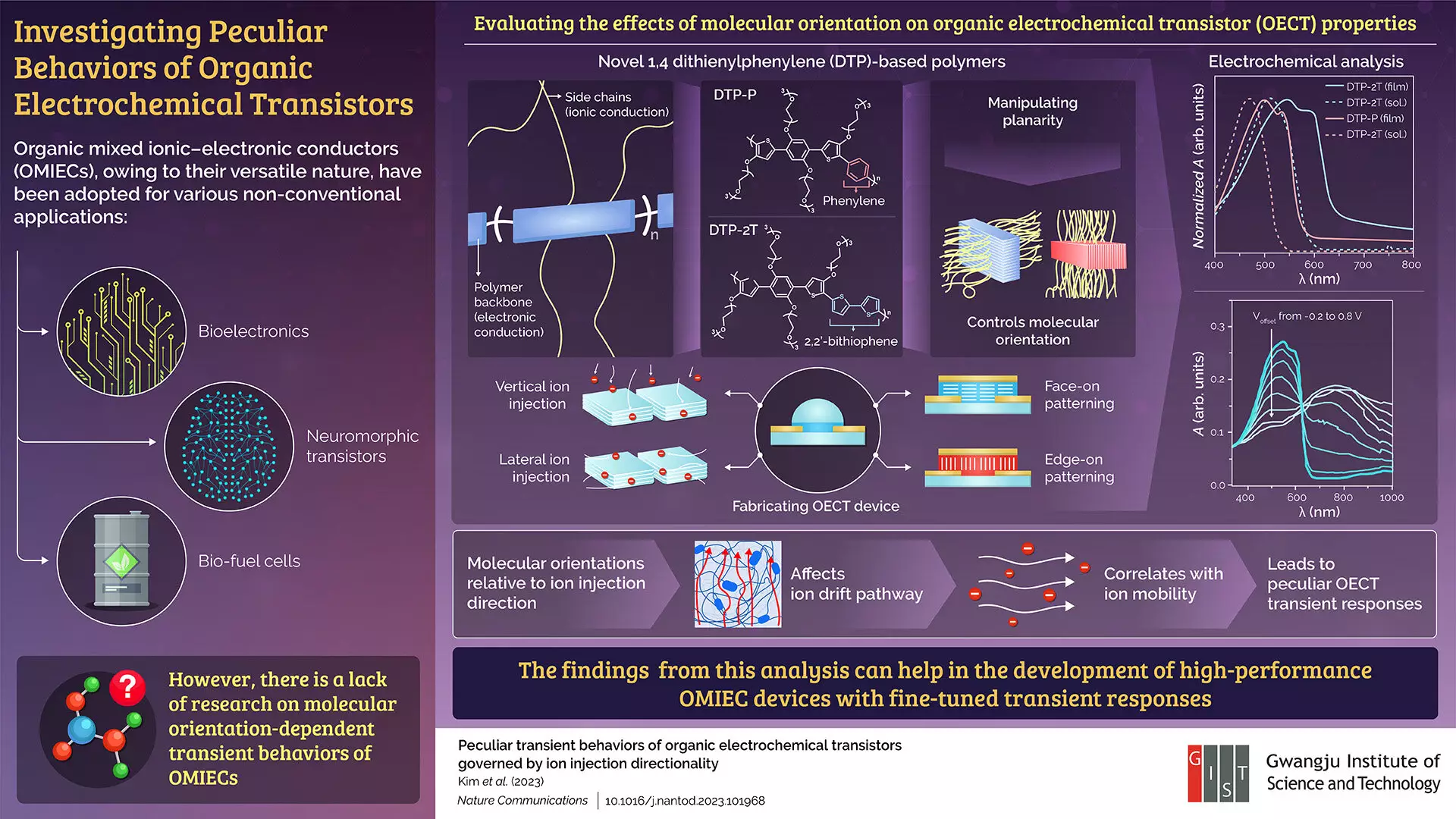Organic mixed ionic-electronic conductors (OMIECs) have emerged as a highly sought-after class of materials with immense potential for non-conventional applications. These materials possess the unique ability to conduct both ions and electrons, making them suitable for applications in bioelectronics, neuromorphic computing, and bio-fuel cells. However, despite their promising properties, there is a pressing need to diversify and tailor the features of OMIEC-based devices to ensure their wider acceptance and practical implementation. To address this challenge, an international team of researchers from Korea and the U.K. led by Professor Myung-Han Yoon from the School of Materials Science and Engineering at Gwangju Institute of Science and Technology embarked on a groundbreaking study to explore the transient behaviors of OMIECs. Their findings, published in Nature Communications on 28 November 2023, shed light on the molecular orientation-dependent characteristics of these conductors, opening up new possibilities for the development of advanced materials and devices.
Previous studies have shown the potential of organic electrochemical transistors (OECTs) in investigating and modulating the properties of OMIECs. OECTs mimic the computing mechanisms of neurons and synapses in spiking neural networks (SNNs), making them a promising tool for exploring the dynamic behaviors of OMIECs. However, the correlation between molecular orientation and transient OECT characteristics has often been overlooked. Professor Yoon and his team recognized this gap in research and decided to investigate the impact of backbone planarity-dependent molecular orientation on transient behaviors.
The researchers synthesized two new 1,4-dithienylphenylene (DTP)-based OMIECs, namely DTP-2T and DTP-P, with different monomer units to manipulate the polymer backbone planarity. Despite having similar ionic and electronic properties, the polymers exhibited different molecular orientations. The team then fabricated OECT devices using the DTP polymers and subjected them to electrochemical analysis. Initially, both polymers showed comparable electrochemical properties, highlighting the impact of molecular orientation on transient behaviors. The researchers further manipulated the ion injection direction relative to the molecular orientation during the analysis and observed the effects on the length of the ion drift pathway. This, in turn, influenced ion mobility within the polymers, resulting in peculiar transient responses in the OECT devices.
The findings of this study provide valuable insights into the molecular orientation-dependent characteristics of OECT devices. By understanding the correlation between molecular orientation and transient behaviors, researchers can unlock new avenues for the development of advanced computing systems based on SNN architectures. These systems have the potential to replace current computing systems, enhancing computation speed and reducing energy consumption. The implications of this research are far-reaching and hold promise for the realization of SNN-based computing systems in the near future. Additionally, the insights gained from this study can facilitate the design and development of advanced organic mixed conductor materials for biomolecular and biosignal sensors.
The study conducted by Professor Yoon and his team marks a significant milestone in the understanding of organic mixed ionic-electronic conductors. By elucidating the molecular orientation-dependent transient behaviors, they have paved the way for the optimization and customization of OMIECs for a wide range of applications. The ability to tailor the properties of these materials will lead to groundbreaking advancements in bioelectronics, neuromorphic computing, and bio-fuel cell technologies, revolutionizing the fields of medicine, energy, and computing. As researchers continue to explore and uncover the mysteries of OMIECs, the future of these materials seems brighter than ever before.


Leave a Reply